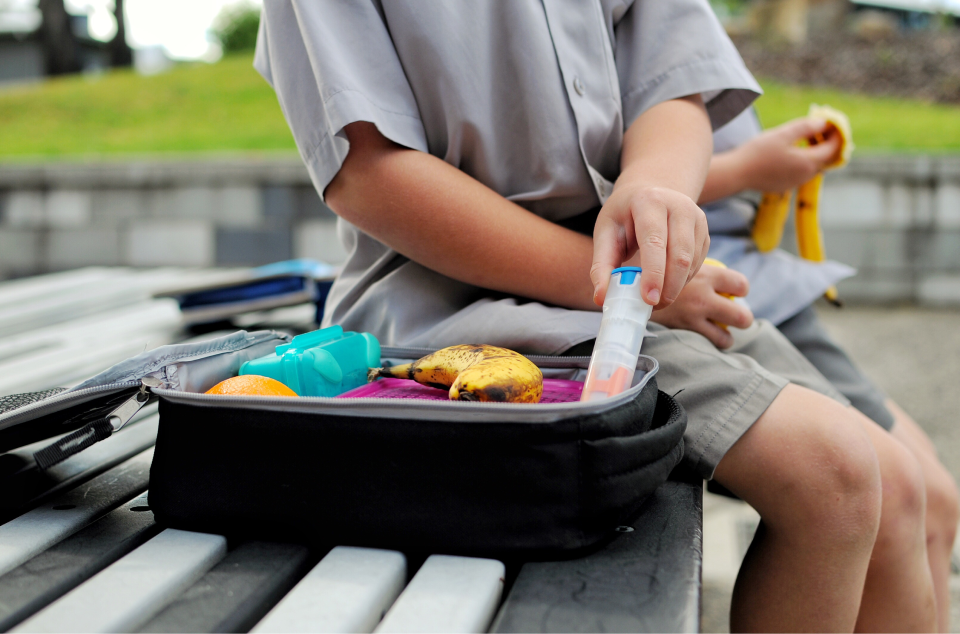Learn more about food intolerances and allergies and their symptoms. Get tips on creating a safer school environment.
What is a food allergy?
A food allergy occurs when the immune system reacts abnormally. It happens when an “allergenic” food has been consumed. Allergy symptoms can include:
- Cramps
- Itching
- Vomiting
- Difficulty breathing
- Anaphylaxis (a symptom which can be fatal)
Food allergies are becoming more and more common. The information below will help you create a safer school environment.
How to create a safer school environment?
Here’s what to do if students in your class have one or more allergies:
- Have students wash their hands before and after meals and snacks. It is important that they use soap and water. Antibacterial disinfectants are not as effective to remove the residues of some allergens.
- Consult the allergic student’s emergency plan. Also get familiar with the school’s anaphylaxis emergency plan.
- Make sure the allergic student doesn’t share food, utensils or containers with other students.
- Let parents know that a student in the class has a food allergy.
Visit Allergy Quebec’s website. You will find:
- More information on food allergies in school
- Resources for teachers and educators
Did you know? An intolerance is an unpleasant reaction that occurs after consuming a food. Unlike an allergy, it does not involve the immune system. Symptoms of food intolerance are often gastrointestinal in nature (e.g., bloating, gas). They are not usually life-threatening.
Tips for working around lactose intolerance
Lactose intolerance:
- Occurs when the body has difficulty digesting lactose (the sugar naturally present in milk)
- Causes mainly gastrointestinal symptoms (e.g., bloating, gas and diarrhea)
People who are lactose intolerant can:
- Continue to consume small amounts of dairy products at meals or in recipes
- Take tablets or drops containing lactase (the enzyme that helps digest lactose)
- Opt for lactose-free dairy products depending on their level of tolerance
In contrast, people who are allergic to milk must avoid all dairy products completely.
Warning
If a food allergy or intolerance is suspected, it is essential to get a diagnosis from a physician. This will avoid depriving a child of certain foods for no reason. Check with the parents to see if their child has such a diagnosis.
Food substitutions for cooking activities
Here are a few substitution suggestions:
Milk
- Plain fortified soy beverage
- Coconut milk
- Fortified rice beverage
Wheat (flour)
- Wheat-free flour blend (e.g., quinoa, amaranth, chickpea, rice, chia and hemp flour)
Peanut butter
- Pea butter
- Soy butter (e.g., Wowbutter)
- Sunflower seed butter
Eggs
The following replace one egg:
- 45 to 60 mL (3 to 4 tbsp) plain yogurt
- 15 mL (1 tbsp) boiling water and 2.5 mL (½ tsp) baking soda
- 60 mL (¼ cup) fruit or vegetable purée (banana, pear, apple, squash, sweet potato)
Butter
- Olive or canola oil
- Dairy-free margarine (with or without soy)

